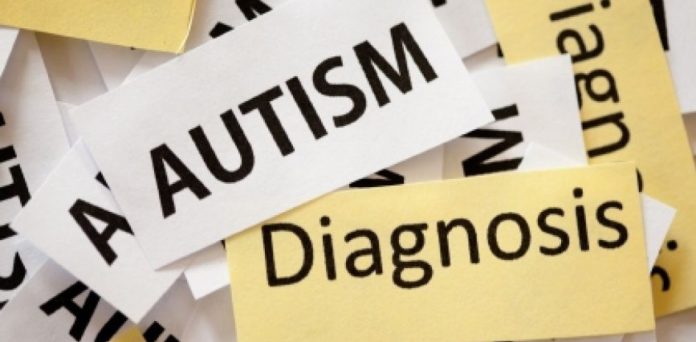
As the rate of children with autism in the U.S. continues to climb, a new study published today in the journal Pediatrics shows that medical professionals can’t rely solely on their clinical judgment to detect autism risk.
The study finds that 10-20-minute observations, such as a standard pediatric exam, don’t provide enough information about symptoms associated with autism. Within that short window, many children with autism display mostly typical behavior and may fail to receive a referral for further autism testing, even if a few autism symptoms are noticed.
“One of the biggest problems with early identification of autism is that many children aren’t identified until they reach the school system,” said the study’s lead author and BYU assistant professor Dr. Terisa Gabrielsen. “This means that they have missed out on some prime years for intervention that can change a child’s outcome.”
Autism spectrum disorder (ASD) and autism are both general terms for a group of complex disorders of brain development. These disorders are characterized, in varying degrees, by difficulties in social interaction, verbal and nonverbal communication and repetitive behaviors.
Last year the CDC released a report stating that 1 in 68 U.S. children is diagnosed with ASD. That’s a 30 percent jump from 1 in 88 just two years earlier. These increases mean an increased demand for autism referral decisions, says Dr. Gabrielsen.
The new study looked at children 15-33 months old, with autism experts analyzing 10-minute videos of the children’s behaviors during evaluation in a clinical setting. Children with autism, speech delays and typical children were included. The researchers wanted to document the ratio of typical behaviors vs. atypical behaviors exhibited and the corresponding referral decisions based on the observations.
Even experts missed autism signs in brief checkup
The team found that within the brief timeframe of 10 minutes, children with autism exhibited much more typical behavior than atypical behavior overall, making it easy for clinicians to miss detecting autism risk. In the study, even the experts who reviewed the videos missed referrals for 39 percent of the children with autism, based on the brief observation alone.
“It’s often not the pediatrician’s fault that referrals are missed,” said Dr. Gabrielsen. “Even autism experts missed a high percentage of referrals within that short timeframe. Decisions for referral need to be based on more information, including autism screening and information from parents. We’re hoping that this information can really empower parents to talk with pediatric care providers about their concerns.”
The American Academy of Pediatrics recommends formal screening for autism at 18 and 24 months, but universal screening has not been fully adopted in pediatric primary care. The screening tools are also available for parents. These simple, standard tools for autism screening, such as the M-CHAT-R checklist and the CDC’s “Learn the Signs. Act Early” campaign, are not perfect, but they are freely available, and can help parents learn what to look for as their child develops.
“Certainly, some young children with autism are clearly impaired and easy to recognize,” said study co-author Dr. Judith Miller. “However, this study looked at the entire range of children who present to the pediatrician’s office, and we found that many children’s impairments are not immediately obvious. For those children, formalized screening instruments and more time with a specialist may be critical.”
Although there are still many unknowns about autism, one thing researchers do know is that early intervention makes a difference. If autism can be identified in the toddler years, intervention can begin while the brain is still rapidly developing and outcomes can change. A more comprehensive screening process, with parents and care providers working together, can have a great impact. This may be particularly for parents of minority children, as recent research indicates that doctors are more likely to overlook autism symptoms in black and Hispanic children.
“Parents see their children at their very best and very worst,” said Dr. Gabrielsen. “They’re the experts for their children. They can be educated about signs and symptoms, and need to help their care providers by speaking up if there’s a problem and being involved in referral decisions.”
